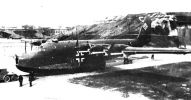
Blohm und Voss BV 222977 viewsWith a wing span of 46 m and six engines the Blohm & Voss BV 222 was the largest flying boat built in the second world war. On 7th August 1941, the BV 222 V2 which, following experience with the V1, was already equipped with suitable defensive weapons, made it's maiden flight. The first flight took place on 7th September 1940, which was after the start of the second world war, when a machine with a long-range capacity and large cargo space was already of special interest to the military. A total of 12 machines were built in different versions. After completion of trials and conversion, the V2 went into service as a troop transporter with LTS See 222 (air transport command sea 222), before it was finally introduced to 1/SAGr. 129 in Biscarosse, France for the long-range reconnaissance purpose for which it was originally intended.    
(35 votes)
|
|
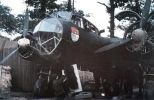
Dornier 17611 viewsThe Dornier 17, were the mainstay of the German bombers during the Blitz on Britain and especially London. Dornier 17 had been an easy target for the Spitfires and Hurricanes of Fighter Command but had proved itself to be a valuable part of the Luftwaffe in campaigns that led up to this battle. The Luftwaffe valued the plane as was shown by production levels for the plane at the start of the war. 1,700 Dornier 17's were built between 1939 and 1940. It made its mark in the attack on Poland in September 1939 and its versatility was such that it was used as a bomber, reconnaissance plane and as a pathfinder by the Luftwaffe. Its limitations were shown in the Battle of Britain, however, when it became clear that the plane was very vulnerable to attacks from the rear and from below and that its defensive armaments were poor. As with other German bombers, against a poor air force, the Dornier 17 did well and the Luftwaffe clearly was over-confident as to its capabilities.     
(19 votes)
|
|
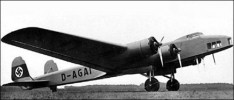
Dornier Do 191255 viewsAlong with the Junkers Ju 89, the Do 19 was developed as part of the "Ural Bomber" program championed by Gen. Walther Wever who forsaw the need for long range strategic bombing capability. When Gen. Wever was killed in April of 1936, the goal of a strategic bombing capability died with him. On April 29, 1937, the Ural-Bomber bomber program was cancelled by Kesselring in spite of protests. Kesselring felt the production and development resources would be better used to develop and build tactical bombers such as the Do 17 and He 111. This philosophy would later haunt and severely handicap the Luftwaffes ability to strike at Russia's production capabilities.    
(6 votes)
|
|

Dornier 335519 viewsAs the Second World War in Europe drew to a close, a powerful new twin- engined fighter was preparing to enter service with the Luftwaffe. This amazing machine was the piston-engined Dornier Do 335. Fitted with Daimler-Benz DB603A-2 engines delivering 1750 hp at take-off, the first example, Do 335 V1 (CP+UA), flew for the first time on 26 October 1943 from Mengen, Wurttemburg, with Flugkapitan Hans Dieterle at the controls. When the US Army overran the Oberpfaffenhofen factory in late April 1945, only 11 Do 335A-1 single seat fighter-bombers and two Do 335A-12 conversion trainers had been completed. A further nine A-1's, four A-4's and two A- 12's were in final assembly, and components and assemblies for nearly 70 more had been completed. Heinkel at Vienna had been unable to build any Do 335A-6 night fighters.    
(14 votes)
|
|
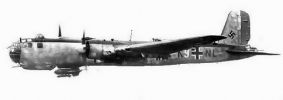
Heinkel He 177523 viewsThe He 177 was a try to devellop a real strategic bomber. The idea to combine two motors on one propeller lead to heavy problems. Due to this and other misstakes in construction, the plane became a deadly trap for many crews and got the the nick-name "Lighter of the Reich". The He 177 saw first operational service in 1942 and was mainly used for maritime warfare in the west. In the mid of 1944 87 He 177 flew an attack on Velikye Luki at the east-front. At the end of the war one machine was modified to carry a german atomic bomb.
    
(8 votes)
|
|
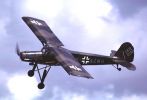
Fieseler Fi 156 Storch481 viewsThe Storch was first flown in 1936. The fabric-covered Storch observation monoplane served the German Forces throughout World War Two wherever the Germans saw combat. With ten times the life expectancy of the Bf 109 fighter, the Storch ("Stork") proved to be a rugged Short Take Off and Landing (STOL) airplane that gained the respect of all its pilots. Over 2,900 Fi 156s were produced. Today, more than 30 Fi 156s and their brethren have survived in Europe and North America, and about 20 are still capable of flying today.
    
(13 votes)
|
|
|
|
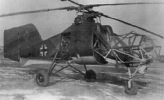
Fl282-1475 views    
(7 votes)
|
|
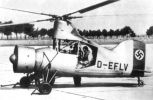
flettner-265518 views    
(10 votes)
|
|
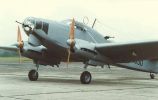
Focke-Wulf Fw 58832 viewsThe Focke-Wulf Fw 58 was an excellent aircraft. It made its first flight in 1935 as a six-seat light transport. The prototype, Fw 58 V1, first flew in 1935 as a six-seater transport. The second prototype was in military guise, having machine guns fitted both in the nose and dorsally. The next production run was of the Fw 58B, some of which were bombers and some others being fitted with floats - the Fw 58BW. The main production model was the Fw 58C, a light transport. Eight were delivered to Lufthansa during 1938/9 as commercial transports.
Large numbers of bothe Fw 58Bs and Fw 58Cs were used by the Luftwaffe being used for light transport, communications and ambulance duties in large numbers even, on occasions, for crop spraying.     
(10 votes)
|
|
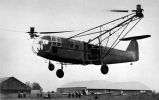
focke achgelis fa223525 views    
(13 votes)
|
|
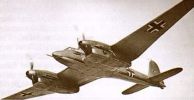
Focke-Wulf 187482 viewsThis plane was excellent when it appeared, but ignored in favor of the Bf110. The pilots in Norway were enthusiastic about its potential and demanded quantity production, but instead they were ordered to give the planes back to Focke-Wulf because they were only in inofficial use. Some Fw187 were also used in the aerial shooting school in Vaerlose, Denmark.
In the facility defense role, they shot down several aircraft. Remarkable was the great maneuvrability; the Rechlin test pilot Heinrich Beauvais was of the opinion that it circled comparable to the Bf109 and rolled only slightly slower than the Bf109, while spped and range were superior. But the disastrous (but good-looking) Me210 and Me410 design was preferred by the air ministry     
(11 votes)
|
|
|
|